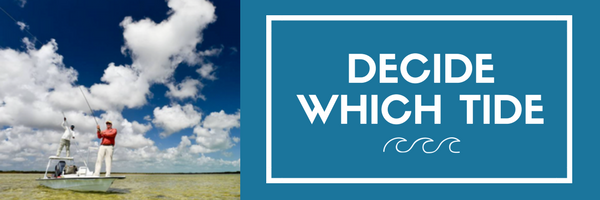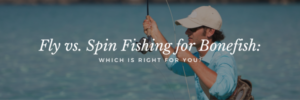There’s a lot to pay attention to when bonefishing.
Choosing the right tide, however, is an important element that many novice bonefishers overlook. Not only do tides have a definite impact on bonefish activity, but they also affect how easy it will ultimately be to get them to bite. Following is everything you need to know about how changes in tide can impact your outcome while out on the flats.
The Moon Reigns Supreme
The moon governs the habits and attitudes of all ocean life, all throughout the year. Much like every other species in the waters, bonefish use the tide to their advantage. Tides can be broken down into two basic categories: neap tides and spring tides. Whenever there are new or full moons, spring tides occur. Spring tides show the greatest difference between low and high tides. Conversely, neap tides exist during quarter moons, and with these, the difference between high and low tides are most predictable and far more moderate. Within every lunar and tidal cycle for any given month, a flat will have two weeks of neap tides and two weeks of spring tides. Other variables that impact tides include winds and barometric pressure.
Spring Tides and Bonefish
Spring tides have both benefits and drawbacks for bonefish. One of the most important things to note about bonefish behavior during spring tides is that they definitely become a bit cockier. This often drives them into incredibly shallow areas, at the risk of becoming fodder for seagulls and crabs when water levels drop. As the water recedes, panic invariably sets in. Driven by both hunger and aggression, however, bonefish will go wherever they have to during early phases of a spring tide in order to eat.
Neap Tides
There’s generally a lot less water during neap tides and this means that you probably won’t see as many bonefish braving their way towards shallow areas on the flat. Areas that are covered in water during a spring tide may even be dry. During neap tides, you can spot bonefish out further and can cast at respectable distances with confidence.
Choosing The Best Tide Profile
The basic truth about tide profiling while bonefishing is that bonefish eat all month long, thus,there is no bad time to schedule a bonefish trip. You simply need to adjust your casting distance and be able to identify the tide-related changes in behavior and feeding. The periods between full moons tend to come with more moderate tides and thus, there are more fishable hours for you to take advantage of during neap tides, as well as a far greater ability to predict the activities and location of your prey.









